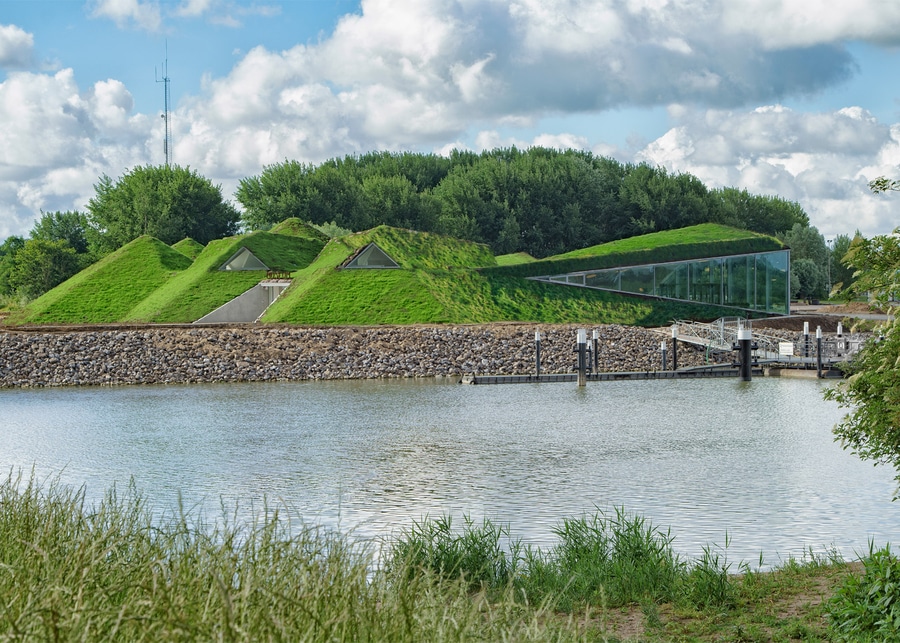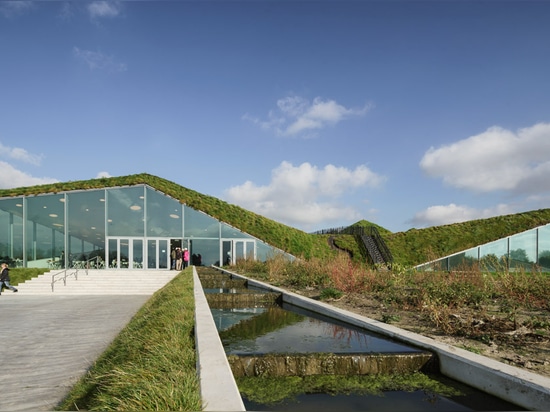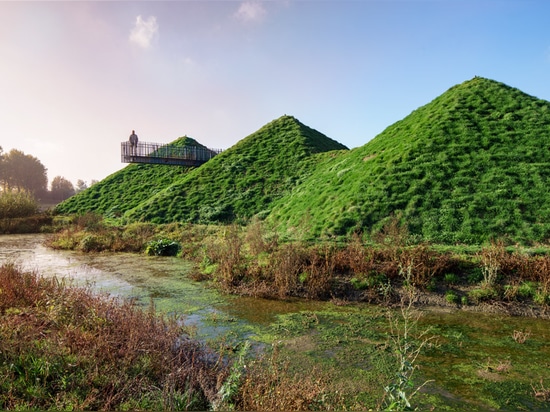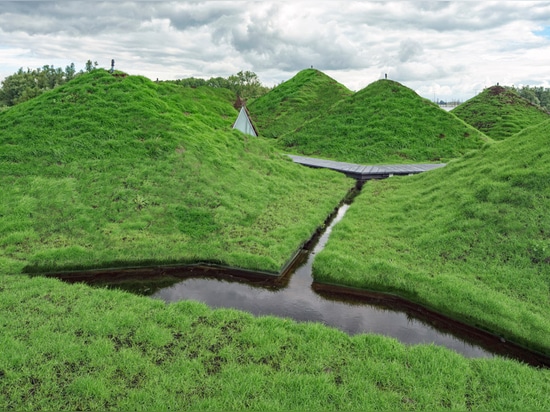
#PUBLIC ARCHITECTURE PROJECTS
Studio Marco Vermeulen adds grass blanket over rooftop pyramids of Dutch island museum
The hexagonal pyramids on the roof of this museum are now covered in a layer of grass, helping the building settle into its marshland environment in the Netherlands.
Rotterdam firm Studio Marco Vermeulen carried out the renovation of the Biesbosch Museum – a building with multiple pitched roofs – and added a new wing for contemporary art.
The local history museum is located on a newly formed island in the De Biesbosch National Park, a wetland area surrounded by willow forests to the south-east of Rotterdam.
This setting prompted the architects to blanket the existing building with a layer of herbs and grasses, transforming it into a miniature landscape of hills, pathways and streams.
A small look-out point carries on from the pathway to cantilever over the edge of the roof.
"The roof adds ecological value, creating a sculptural object that reads as land art and, at the same time, manifests itself in the surrounding landscape," said the architects.
"A fold in the roof gives way to an adventurous mountain trail and a lookout post."
Wedge-shaped windows draw natural light into the ground-level exhibition spaces, and give the roof the appearance of a flap of turf that has been pushed upwards.
A small stream extends from the museum garden through one of the glass walls and across the floor of the extension.
Trenches dug around the museum maroon it in the centre of a new reservoir, which forms part of a wider water-management scheme across the Netherlands called Room for the River.
Over 25 per cent of the country's landmass sits below sea level, making flood management a key concern. A scale model of the project will be installed on the island next spring.
"Water safety was the key reason for the development of the Biesbosch Museum Island," explained the studio. "As part of a national water safety programme, the 4450-hectare Noordwaard polder has been turned into a water-retention area."
The existing building houses a permanent exhibition about the history of the park, as well as a library, theatre and museum shop.
An organic restaurant and art exhibition spaces are located in the new wing, which is affixed to the south-west of the original museum.
Triangular windows dot the roof, where the museum's offices are set alongside the Dutch Forestry Commission and the Park Board.
The design of the building is intended to minimise energy consumption.
Heat-resistant glass and the green roof help to insulate the building throughout the year, while a biomass stove maintains the temperature on cooler days. Water is pumped through the same pipework on warm days to help cool the building.
Wastewater is filtered through willow beds and the purified water redirected into the adjacent wetlands. The willows can be harvested and used as kindling for the biomass stove.
It is hoped the improvement in water quality will help entice salmon and sturgeon back to the region.
"The indoor pond at the restaurant hints at the return of the sturgeon," said the architects.





